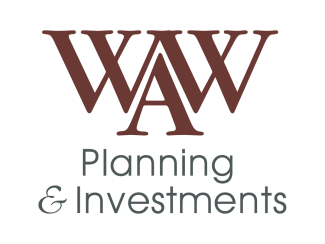
Read 'Em or Weep: Financial Literacy is a Must
Being financially literate is one key to economic stability. It includes understanding how to make smart financial decisions, budget effectively, save for the future and handle money challenges in emergencies. While there are many financial apps available, they are not the solution to improving the level of financial literacy in America.
The financial literacy rate has decreased since 2020, when it reached a peak of 52%. It dropped to 48% in 2023 and 2024. Having a more financially literate population helps the economy and improves household finances.
In 2023, the National Financial Educators Council surveyed people to determine the costs associated with a lack of knowledge about personal finance. Ignorance cost people an average of $1,015 in 2024, and “8.83% of Americans said the cost of not being financially literate was more than $10,000,” according to the survey. This amount is likely much higher if it includes mistakes in making major purchases such as cars or homes and saving for retirement.
With the lack of availability of company-provided pensions, the burden of achieving a secure retirement has shifted to individuals who are likely not equipped with the knowledge to navigate the evolving landscape of retirement savings plans coupled with increasing lifespans.
Researchers looking for strategies and solutions for increasing financial literacy have identified three dimensions: financial knowledge, financial attitude and financial awareness. Research also has highlighted the importance of socio- economic standing. It suggests that low-income groups typically demonstrate lower levels of financial literacy and this lack of knowledge makes it difficult to manage daily expenses and financial resources effectively, further exacerbating financial hardship. Becoming financially literate can help people in this group with financial choices and challenges and enable them to develop effective coping mechanisms.
Other studies have shown that improvements decrease over time. Many doubt that increasing financial literacy will be enough to improve economic capabilities and argue that systematic changes to the personal finance industry are needed, as well. Many financial disclosure documents are difficult to read and contain inscrutable fine print. Many terms are difficult to understand. In my work, I frequently encounter individuals who are invested in products that are inappropriate for their situation because they didn’t understand how a product worked or how much it really cost.
I am part of the Bartholomew County Financial Literacy Coalition. One of the programs we sponsor is Mad City Money, which is a hands-on simulation for high school students to help them make the connection between income and expenses. Based on their interested career cluster, they are assigned a character with income, student loan payments, debt and different family composition.
They go through stations picking out housing, transportation, food, clothing, necessary child expenses and activities. Some common choices that lack foundation in reality are choosing a nice vehicle for yourself and having your spouse take public transportation. The other is planning on parents to provide child care. The volunteers are told that they are not to help the students. Their role is to be a salesperson and to encourage students to spend as much as possible at their station. It is eye opening for the students and the volunteers.
If you feel overwhelmed with financial decision-making or feel as though you make a decent salary but are stressed about making ends meet, you can find free resources on the Indiana Secretary of States’s Office website under the Indiana MoneyWise program. Another good source of information is the Purdue Extension Office. Learning materials are available— it just takes the desire, determination and time to seek them out. Improving financial literacy is not just helpful for yourself but for your entire family and will provide the next generation with a step ahead as they enter the workforce.
It is also an ongoing process of continually learning. A great place to start is finding resources and learning to keep asking questions. Do your own research. Don’t just depend on suggestions from family, friends or co-workers.

